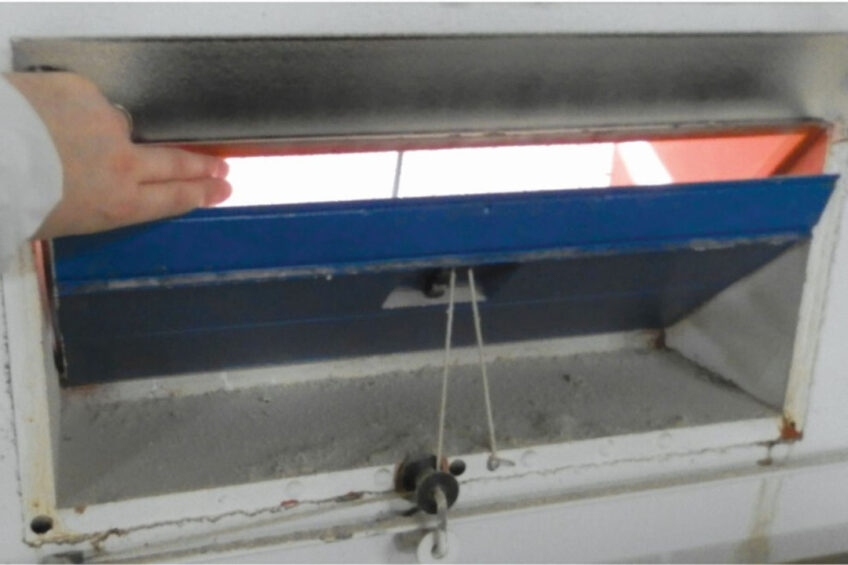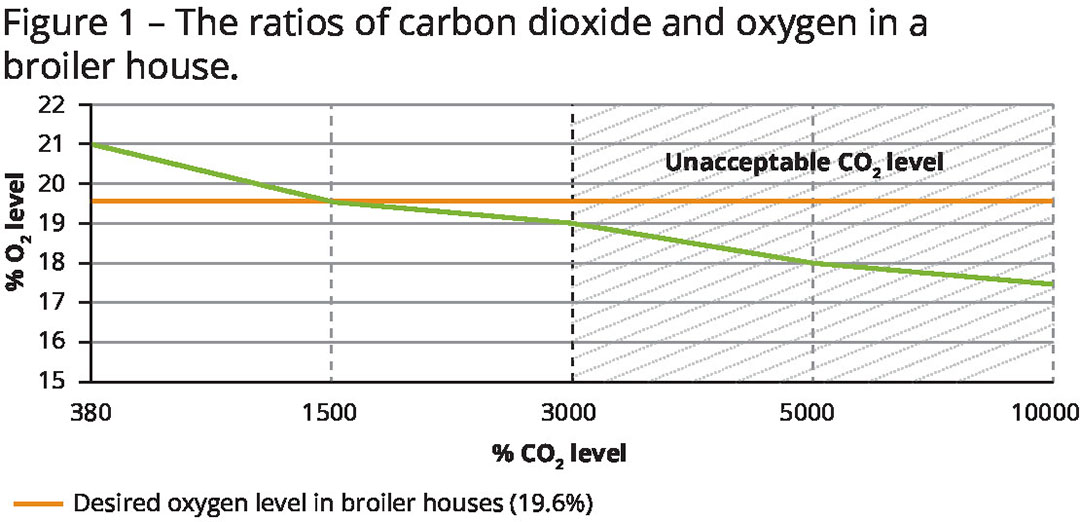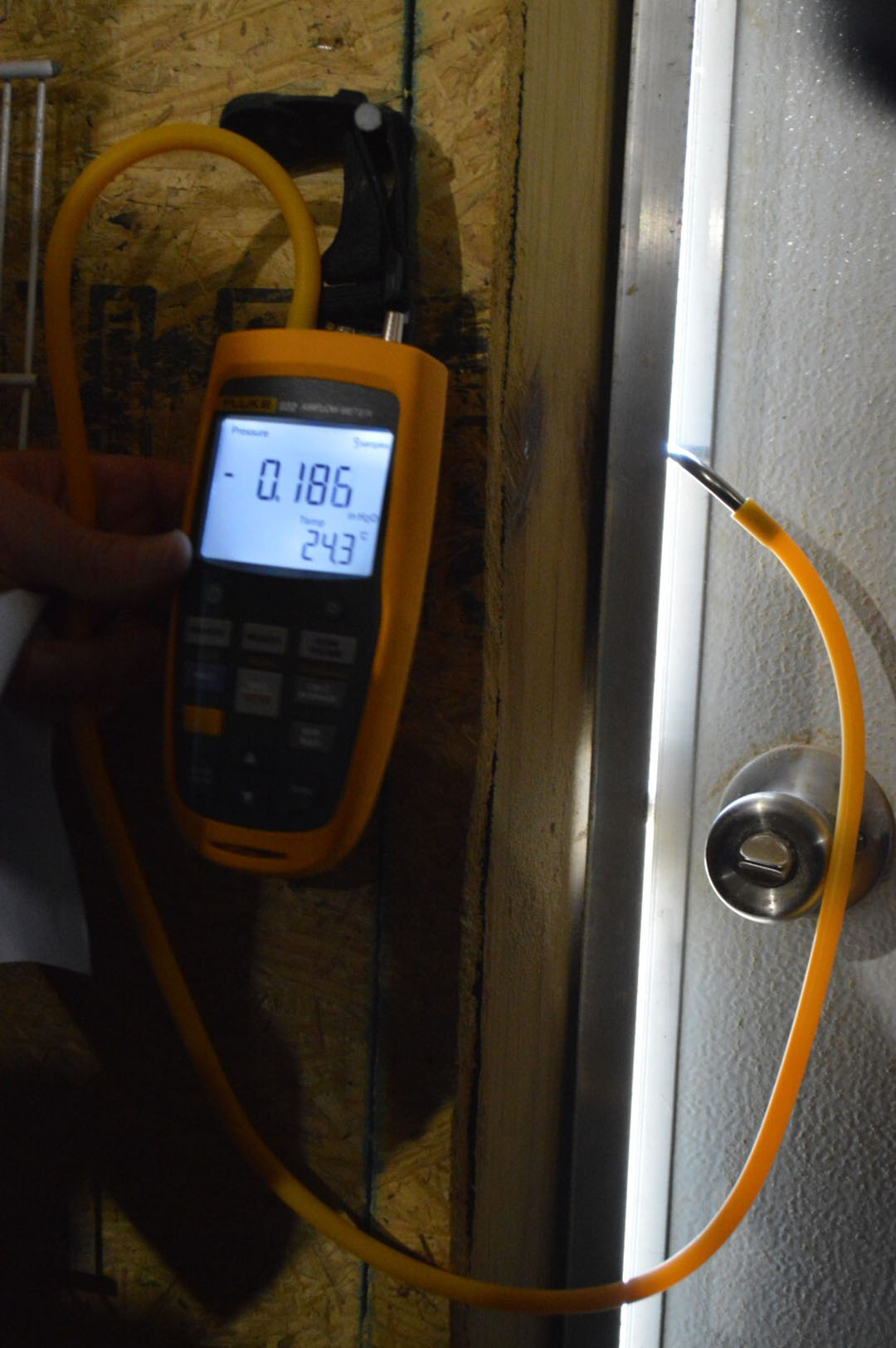Optimising winter ventilation for broilers

The greatest challenge facing any producer is the dynamic comfort zone requirements during the broiler life cycle, which also depends on the region of the world and season. However, during the winter, when outside temperatures drop significantly, tremendous challenges arise between maintaining target temperatures without forfeiting optimal air quality.
Progress in genetics, nutrition and management has enabled remarkable improvements to be made in the daily growth and feed efficiency of modern broilers. The benefit of these improvements is a dramatic reduction in the time a modern broiler takes to achieve market weight. However, for every hour the birds do not have optimal temperature and ventilation, valuable performance will be lost.
It is nearly impossible to properly ventilate or control temperatures in a poultry house if it is not well sealed. Any cracks, leaking fan shutters, poorly sealed inlets, or poorly installed roof insulation will reduce the ability to control static pressure. Poor static pressure control means a large percentage of fresh air will enter the house through leaks. In this case, higher fan capacity is required to achieve the correct air volume and velocity across the inlets and will cause over-ventilation and increased heating costs. In addition, it will be difficult to maintain target temperatures, particularly at night. Leaks are also sources of cold drafts, which may cause health issues for birds and wet litter.
The vast majority of modern side wall fans have shutters mounted on the inside which can be sealed with a sheet of plastic placed between the shutter and the frame during the winter. The larger cone and box-type fans used for summer ventilation can also be sealed with a plastic cover on the outside. The negative pressure created in the house will pull the plastic against the fan shutters to help the seal. Large doors are also easily sealed by placing a large plastic sheet on the outside.
The following is a very simple pressure evaluation test. The fans used for the test are based on the house floor area. Start by closing all inlets and doors and then run the equivalent of 18 m³/h of fan capacity per m2 of floor area (e.g. 2,000 m2×18 m³/h = 36,000 m³/h of fan capacity). Depending on the fans installed, it is not always possible to get a perfect match. With fans running, measure the static pressure across any small opening, such as a slightly opened inlet or hole. Static pressure of >37.5 Pa indicates the house is adequately sealed. Static pressure <25 Pa indicates a poorly sealed house which will require maintenance. A newly-commissioned house should easily achieve a static pressure of 60 Pa. Always record the results of your pressure tests for future reference.
Minimum ventilation
Minimum ventilation systems are designed to manage air quality and moisture levels using fans on a cycle timer. This system is independent of the temperature control system and needs to be designed and operated such that it will maintain good air quality and moisture control for optimal broiler development (Table 1).
Minimum ventilation factors to consider are:
- Continuous genetic improvements result in higher metabolic and growth rates, which, in turn, increase oxygen demand. These increased metabolic rates also mean increased metabolic heat production, moisture deposited in the litter via the faeces, and levels of carbon dioxide production – all of which must be removed by the minimum ventilation system.
- Due to the increased heater run times during the winter, more stress will be put on the minimum ventilation system as the heating system produces more waste gas.
- During the winter, there is a tendency for producers to reduce minimum ventilation rates as a means of maintaining temperature and reducing energy costs. However, this can cause poor air quality.
During the winter, it is particularly challenging to meet air quality parameters due to the dilemma of maintaining temperature and ensuring optimal air quality. When the heating capacity is limited, there is a tendency to reduce the minimum ventilation to prevent heat loss. At the same time, carbon dioxide levels and relative humidity (RH) will increase which will have a negative impact on the development of the bird and litter conditions. Correct programming of the minimum ventilation is the only effective means of controlling these parameters.
Controlling carbon dioxide levels
Oxygen is an important component in physiological processes, and birds will require a minimum level for optimal performance. In a poultry house, carbon dioxide is continuously added to the environment by the birds and the heating system, particularly in the winter, and brooded with constant heater usage. The carbon dioxide levels should be kept below the maximum range of 3,000 ppm as increasing levels of carbon dioxide will displace oxygen in the house (Figure 1). When carbon dioxide levels exceed the maximum level of 3,000 ppm or 0.3%, oxygen availability will be low, resulting in inactive birds, reduced feed and water intake, and a higher risk of ascites development.
Controlling RH levels
 Like carbon dioxide, moisture will be added to a poultry house mainly by the birds and gas heating systems. Birds will add moisture through respiration, drinking and excreta. The combustion of 1 m³ of gas adds 1 litre of water vapour to the air. If this added moisture is not removed from the house, the RH will increase and cause wet litter problems. The RH needs to be kept below 70% whenever possible. The only means to remove excess moisture is by increasing air temperature and air exchange rates. As air temperature increases, its moisture-holding capacity will also increase, which significantly increases the amount of moisture that can be removed by the minimum ventilation system.
Like carbon dioxide, moisture will be added to a poultry house mainly by the birds and gas heating systems. Birds will add moisture through respiration, drinking and excreta. The combustion of 1 m³ of gas adds 1 litre of water vapour to the air. If this added moisture is not removed from the house, the RH will increase and cause wet litter problems. The RH needs to be kept below 70% whenever possible. The only means to remove excess moisture is by increasing air temperature and air exchange rates. As air temperature increases, its moisture-holding capacity will also increase, which significantly increases the amount of moisture that can be removed by the minimum ventilation system.
Inlets and heat circulation systems

Inlets are possibly the most important part of the house ventilation system. Positioning and design of the inlets will significantly impact the direction of the incoming cold air. In many regions of the world, outside winter air temperatures are low with potentially high levels of RH. This cold, moist air needs to be heated before reaching bird level. Due to stratification, air temperatures are always hottest at the ceiling or roof peak. Incoming cold, moist air needs to be directed to the peak and mixed with the hot air before reaching bird level.
In cold weather, air inlets should only open from the top, directing the incoming air to the peak of the house. Poorly sealed and designed inlets that leak from the sides or base, direct a significant amount of cold heavy air onto the floor. This cold air is a source of drafts and wet litter.
The opening of the inlets should always match the fan capacity and generally have a minimum opening of 5 centimetres to produce an optimal air jet. A smaller opening will not produce a strong enough air jet that is capable of reaching the centre of the house. For adequate air distribution, the incoming air needs a smooth surface to flow along to ensure it reaches the centre of the house where it can mix with the hot air in the peak of the roof.
During brooding stages, not all of the inlets are used so that the minimum opening of 5 centimetres is achieved. Itis always best to ensure that opposite pairs of inlets are open or closed for optimal air flow. Any inlet that is not in use should be completely closed because leaks cause pressure losses.
Inlet openings should be pressure controlled to maintain a constant airflow at different fan capacities. When cables are used to operate the inlets, give special attention to the nylon cords closing the inlets. Cables can stretch and cause uneven openings. Inlets that do not close completely will cause pressure and energy loss. An 8 millimetre steel rod is the preferred material when installing the inlets.
There are many different designs and setups for circulation fans. The primary function of a circulation fan system is to break up the natural heat stratification in the house. It is not unusual to see up to a 10°C difference between the ceiling and floor level. These systems are designed to mix the air from floor to ceiling and remove significant levels of moisture from the litter.












